By Kelly Van Laanen, Trip Leader
• 03/17/2023 •
Poas Volcano National Park, La Paz Waterfall Gardens and Doka Coffee Plantation.
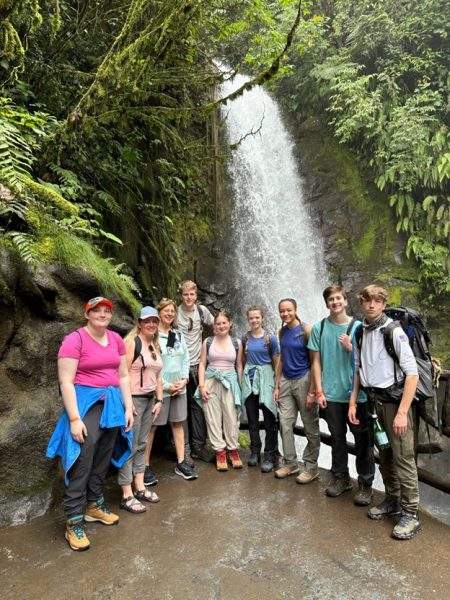
Students started the day visiting Poas Volcano National Park which has one of the largest craters in the world and is located in the forests of Central Mountain Range, which boasts magnificent natural landscapes. This area called “botos” by the Spaniards, referring to a group of Indians who populated the foothills at Northside of the volcano. The term Póas can be derived from the Latin name “quills / púas” due to the presence of some spiny plants in the area or by the existence of a town called “Púas” located near the massif (a compact group of mountains).
The Lourdes students then explored the La Paz Waterfall Gardens Nature Park which is the home of Five Famous Waterfalls and the largest animal sanctuary in Costa Rica. The property is nestled between Poas Volcano National Park and Braulio Carrillo National Park on the eco-route between San Jose and Arenal. Students got to learn about and see many of the plants and animals they will see in the wild during their tour of Costa Rica including monkeys, butterflies, fungi and orchids.
Finally, students visited the Doka Coffee Plantation where they got to sip coffee for a little caffeine boost! Students learned about the step-by-step process of seed germination to the first crop of plants. They learned about the development process of the plant up to the point of recollection of the ripe grain. They were also told about the history of the estate, its owners, the production and varieties of plants, and the geography of the area and the traditional ways of cultivating the grain.
• 03/18/2023 •
Scenic Flight to Puerto Jimenez, Dolphin/Snorkling Tour and Check in at Saladero Eco Lodge
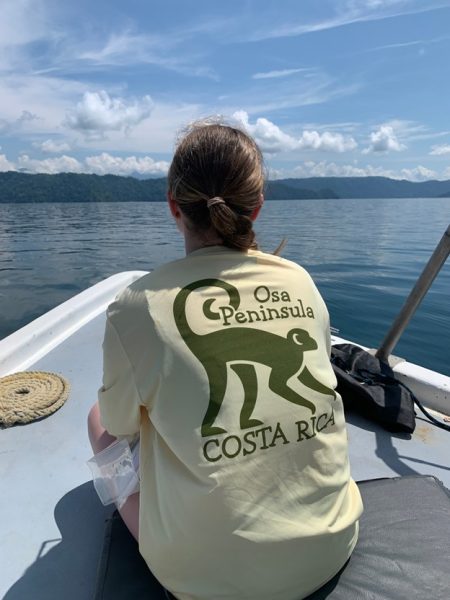
We had an early morning departure for our scenic SANSA flight to Puerto Jimenez. Students used their time at the airport to work on their daily trip report. They all enjoyed flying from the Central Valley area of San Jose area into the coastal Golfo Dulce. We did a short nature hike and added over 10 birds to our life lists! We then boarded the Changing Tides boat for our dolphin and snorkeling tour.
We saw the Bottlenose dolphins first. Our Changing Tiides guide, Phoebe, was so informative and knowledgeable. We learned that bottlenose dolphins swim in a smaller sized pods than the spotted dolphins. They don’t need to have large pods because they have excellent eyesight and are able to find fish easily.
We then learned that there are resident and nonresident dolphins in Golfo Dulce, and about dolphin reproduction. Dolphins have a 12 month gestation period and are born tail first. This is important because they need to quickly take a breath and their blowhole needs to be near surface to do so. The young dolphins usually spend 12 months with mother before exploring on their own. Dolphins are mammals and have mammary glands. They have a mammary slit and no nipples. We got to see all different ages of dolphins in the pods we observed, including a couple tiny babies.
The second pod of dolphins were spotted pan tropical dolphins. They swim in a very large group of over 400 dolphins. Our boat was absolutely surrounded by the pod several times and we even got to hear their vocalizations through submerged equipment.
We had a snack of salsa and black beans and then went snorkeling on a unique reef that had an underwater trail. The coral in this area is being restored with a conservation program. Students learned about a new program where coral is being grown in special areas and replanted in Golfo Dulce.
After an onboard lunch we arrived to Saladero Eco Lodge and took a short hike to learn about the plants on the property, how they are used for food and some of their medicinal values. The trails of the ecolodge are lined with pineapples! We even sampled some of their amazingly fresh fruit, smelled and tasted fresh cinnamon bark and had some fresh juice to cool down and rehydrate.
• 03/19/2023 •
Piedras Blancas National Park Hike and Esquines River Mangrove Kayak Tour
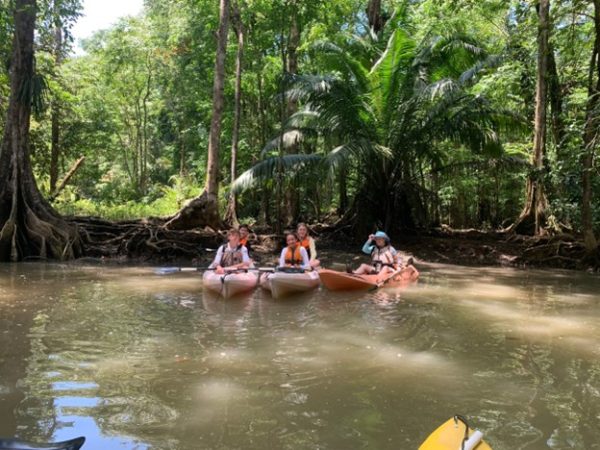
Saladero Ecolodge is surrounded by the Piedras Blancas National Park which has over 30,000 acres of primary and secondary rainforests. Students split into two groups today. One group hiked the trails with Pepe and the second group kayaked the mangroves with me.
One of the highlights of the Golfo Dulce in Costa Rica is kayaking the spectacular mangroves of the Esquinas river. Golfo Dulce means “sweet water” because there are so many freshwater rivers that feed it. The Esquinas river is a special area between the fresh and salt water. This area is home to 5 species of mangrove trees! The trees occur in “layers” depending on the salinity of the water. The mangroves here are very old and have adapted to the harsh saltwater habitat. Students learned about the importance of the mangroves that support a wide variety of wildlife, both above and below their intricate root systems. They also serve as a buffer to reduce erosion from harsh tropical storms and hurricanes.
We added several birds to our life list today, including Ringed Kingfisher, Snowy Egret, White Ibis, Osprey, Little Blue Heron and the Boat Billed Heron.
The Saladero Permaculturists Mo and Om gave a presentation on giving back to the earth and their travels after dinner. Mo talked about things Saladero does to be eco friendly like using solar energy, composting, and serving local foods they grow themselves. Students learned about how they are treating bamboo to make permanent gardens. They also learned about the composting area that is surrounded by a circle of banana trees. Students looked at pictures of treehouses that Om makes. They are created without harming the tree by using bamboo and no nails.
• 03/20/2023 •
Depart Saladero Eco Lodge, Osa Chocolate Factory Tour and Hike to LaLeona Eco Lodge
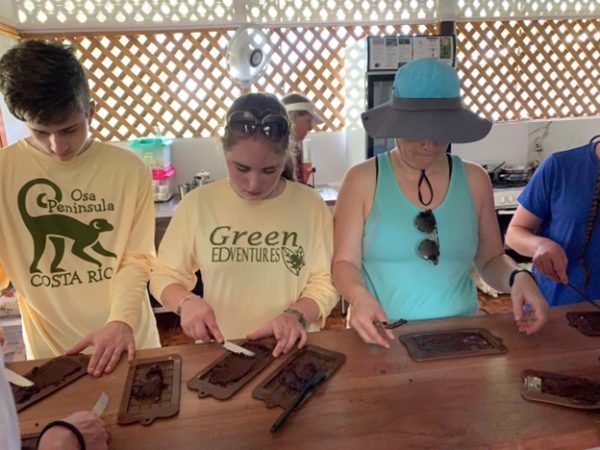
Today we depart from Saladero Eco Lodge and take a water taxi to Puerto Jimenez. The students are getting much better at spotting the wildlife and birds now. They got to watch a toucan on the morning bird hike. They are a smart group that answers questions about the environment. They are very good at seeing the big picture.
When we arrived in Puerto Jimenez we learned all about chocolate at the Osa Cacao Chocolate Factory. We were welcomed with a delicious hot chocolate drink. Students learned about about the entire chocolate manufacturing process and made their own chocolate bar. This family operation does everything from planting the trees and maintaining them, harvesting, fermenting, drying, seed roasting and finally grinding and making chocolate products. Students also got a chocolate facial, shea butter moisturizer and tropical fruit with chocolate spread treat.
After our tour we got back in the taxis to travel to Carate, where we hike into LaLeona Eco Lodge. During this day we travel all the way from the calm waters of the Golfo Dulce to the Pacific Ocean on the Osa Peninsula. Students observed the changing landscape and see different types of plants and animals in the changing ecosystems. On a brief stop for local ice cream and smoothies we got to observe a sloth hanging out in the treetops.
On our hike from Carate to LaLeona Eco Lodge in Corcovado National Park we learned about strangler figs. Strangler fig is the common name for a number of tropical and subtropical plant species in the genus Ficus, including those that are commonly known as banyans. They surround other trees and eventually choke the original tree out. During that process they create a good habitat for creatures like bats and frogs.This growth habit is an adaptation for growing in dark forests where the competition for light is intense. Strangler figs suck up the nutrients from its victims, causing them to die eventually.
• 03/21/2023 •
Monkey Camp Hike in Corcovado National Park
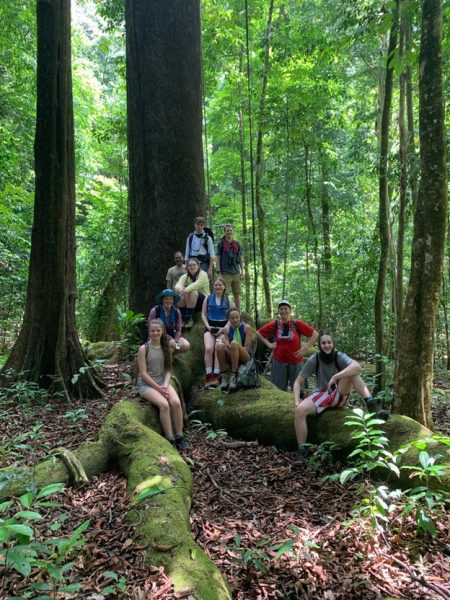
Corcovado National Park is a reserve on southwest Costa Rica’s Osa Peninsula that protects varied tropical ecosystems. Considered one of the world’s most biodiverse regions, its wildlife includes scarlet macaws, tapirs, jaguars and squirrel monkeys. Hiking trails follow coastal and inland routes through habitats ranging from Pacific beaches and mangrove swamps to lowland and montane rainforests. Today we went on the Monkey Camp Hike in Corcovado National Park beginning at LaLeona Eco Lodge.
We almost immediately came upon a green and poison dart frog. Unlike all other poison dart frogs, green and black poison dart frogs gather in large groups before mating. They squabble over territories; eventually, each individual male frog clears a small patch for himself. Females wander among the males, with the latter then attempting to impress the former with their bird-like mating calls. Once a male has caught the attention of a female, he leads her to a site he has selected for egg deposition. The female lays her eggs, which he then fertilizes. In about 14 days, these hatch into tadpoles. Their parents, typically the male, then carry the tadpoles into the canopy, with the tadpoles sticking to the mucus on their parents’ backs. The parents then deposit their tadpoles into the small pools of water that accumulate in the center of bromeliads, and guard the tadpoles while they feed on algae and small invertebrates that inhabit the tiny pool.
We also saw a collared peccary. The collared peccary has a pig-like snout, a large head and shoulders and small legs with hoofed feet. It has gray and brown bristly fur. It has a collar of white or yellowish fur around its neck and small, straight tusks. It is two to three feet long and stands about one and a half feet to two feet tall. It has a musk gland at the top of its rump. It uses its musk to identify members of its group and to mark its territory. It is also sometimes called the javelina. While they usually are in groups this peccary was solo today.
Within Corcovado you can find 13 major ecosystems with stunning flora and fauna, all four monkey species, all four sea turtle species and over 40 frog species. In addition there are 100 butterfly species, 10,000 insect species, several types of snakes, over 25 lizard species, all six feline species, tapirs, crocodiles, peccaries and over 400 bird species like macaws! By the end of our hike we had observed 3 different monkey species, 25 different birds, 3 different ant species, 2 types of wasps, 6 different spiders and too many plant species to count!
The students especially liked learning about jumping spiders! Pepe taught us how fascinating jumping spiders are with facts like they can easily jump and catch their prey, they have no need to use their webs for hunting. When jumping spiders find a target, they extend their legs and launch after their meal, which is typically small insects. Once they have cornered their prey, they just add a bit of venom. We also learned that jumping spiders have both small and large eyes! The smaller set of eyes provide a wide angle view and a sense of motion, while the larger, primary eyes in the center of the spider’s head provide a massive amount of detail in color and the best spatial acuity of any animal of similar body size. As an added bonus, the spiders’ retinas can swivel on their own, allowing the spider to look around without moving its head.
• 03/22/2023 •
Hike from LaLeona to Carate, Scenic Drive to Puerto Jimenez and Zip Line Adventure
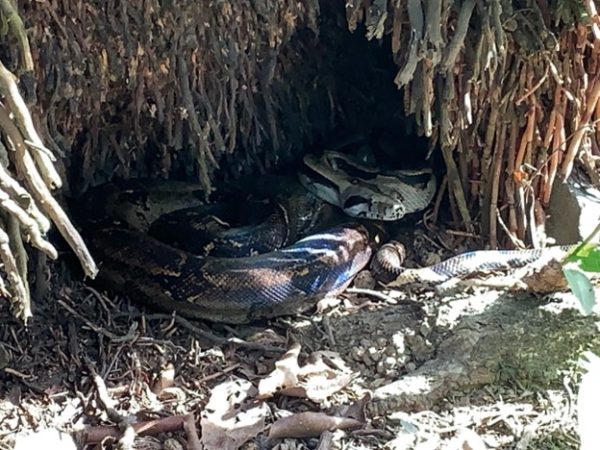
The hike from LaLeona into Carate brings us through sections of primary and secondary rainforest. Simply put, a primary forest is an untouched forest, most often within the context of logging activities, which should have never taken place in that forest area, whereas a secondary forest is a forest that has already been logged or disturbed in a significant way, by the activities of human beings. Although Corcovado is now protected from logging and deforestation, there are occasionally small signs from when this area was a gold mining area amongst the secondary rainforest. One of those small signs included a partial overgrown house foundation and a cashew tree.
One of the most amazing parts of being a trip leader is getting to witness people connect seeing a food they eat to the living breathing organism. Today students did that with the cashew tree! The cashew tree is a seasonal tree that yields fruit once a year. During the season, the tree first starts to flower and then forms the drupe or the cashew seed. What is referred to as the cashew apple, starts to form around it. As harvest season approaches, the fleshy fruit forms fully. The yellow and red cashew apple is an accessory or pseudo fruit – the true fruit of the tree is the kidney-shaped grey-ish seed protruding from the fruit, inside which we find the cashew kernel. Raw cashew nuts are harvested when the apple falls off the tree – this ensures the seed is fully matured. The seed is very unique looking, and students said it looked much like an alien which was pretty comical to the trip leaders.
This hiking trail is also used as a highway for leaf cutter ants which we used to discuss the term symbiosis. It’s amazing to see students experience scientific terms come to life on these trips! We learned that using leaves cut from trees, the ants cultivate a fungus from which they feed. Studies show that leaf-cutting ants have been cultivating the same strain of fungus for at least 23 million years. Neither the ants nor the fungus can survive without the other, and this link is perhaps the best recognized example of mutual symbiosis, the dependance of two species on each another. Female leaf-cutters also carry a small patch on their cuticle that grows the bacteria Streptomyces. The ants spread this bacteria over leaves and fungi in the garden to kill other types of fungi. Not only does this particular bacteria ward off parasitic fungi for the leaf-cutters, but it also is found in more than half of the antibiotics in modern medicine today. It was an important lesson on why we need to protect the biodiversity of the rainforest and other ecosystems.
Other highlights from the day were seeing a boa constrictor (see photo above) and squirrel monkeys (which are endangered species and not often observed). At the zip line facility there was also a huge female golden orb weaver and a tarantula. It’s amazing to see the rainforest from the perspective of flying through the canopy, versus looking up from the ground into the canopy.
• 03/23/2023 •
Scenic SANSA flight from the Osa Peninsula into San Jose, then international travel back to US.
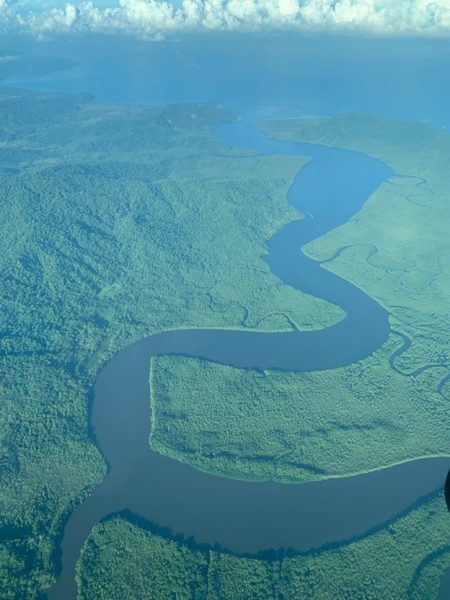
Students took a scenic flight from Puerto Jimenez into San Jose before flying home today. Costa Rica can be roughly divided into five climatic regions, although there are plenty of micro climates within each of these.
When you think of Costa Rica, you probably think of hot steamy weather and endless sunshine, which is mainly what we experience on the Osa Peninsula. Thanks to its diverse geography though, the Costa Rica climate is quite varied. From cold, misty mountains to hot, humid rainforest. We experienced a large temperature and humidity difference when we landed in San Jose with the cooler and less humid air of the Central Valley.
On our flight from the Osa Peninsula to San Jose, we fly into the Central Valley, which has unique weather. Thanks to its moderate altitude and the protection by the surrounding mountains, it has what many believe is the perfect climate. The average temperatures sit comfortably between 15 and 30 degrees (Celsius) all year round, leading some to claim it is a land of eternal spring. Unfortunately, the students and this Trip Leader were flying back into Wisconsin, where a small blizzard was occurring. Fortunately we missed most of the snow and instead were treated with the Northern Lights shining brightly for our return home. If you have to travel from the Central Valley’s perfect climate to frigid Wisconsin, the Northern Lights made that (almost) bearable.
If you’re interested in organizing a trip for your students, click on the link below to see what destinations are available.
Educational Tours

